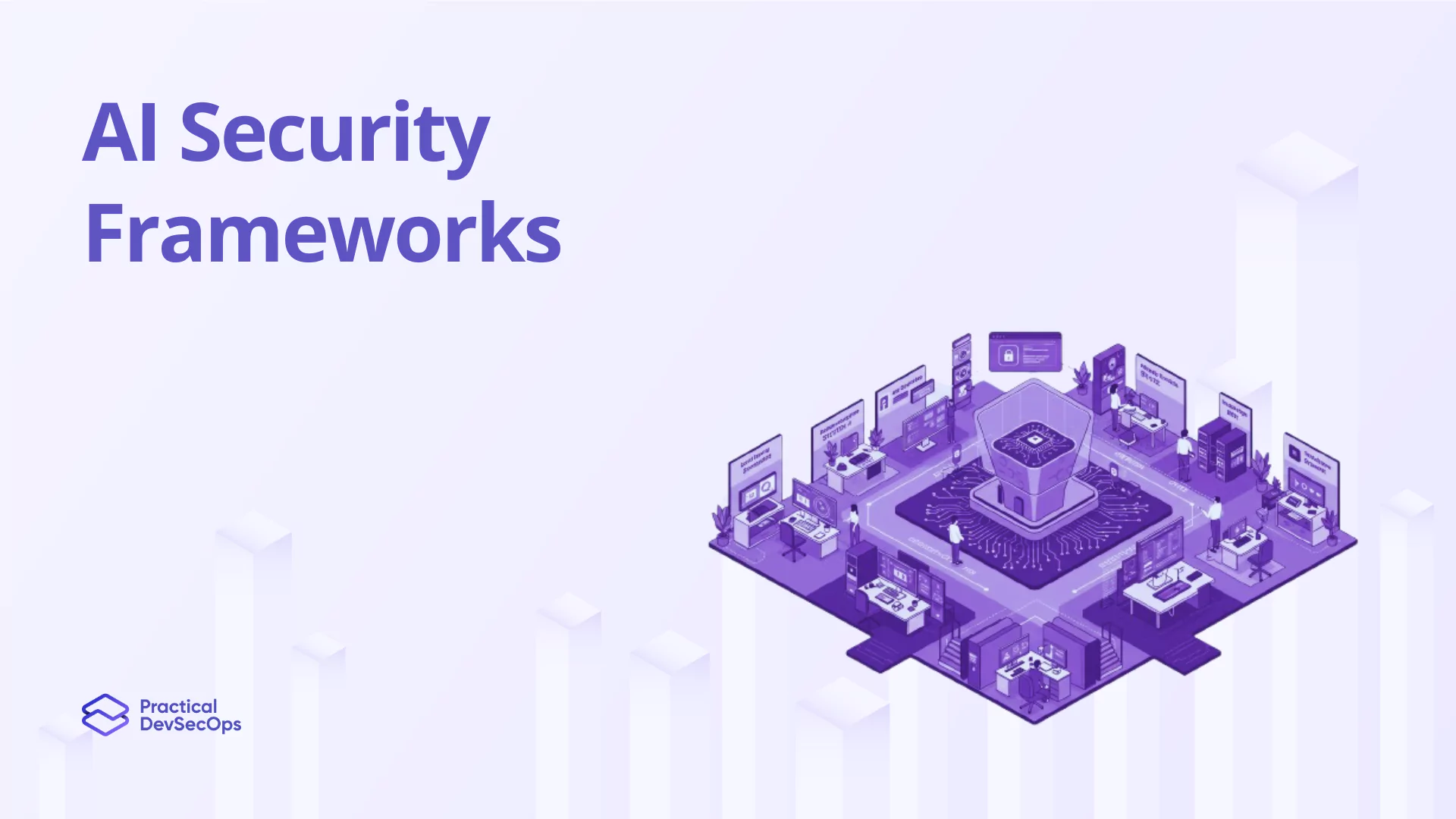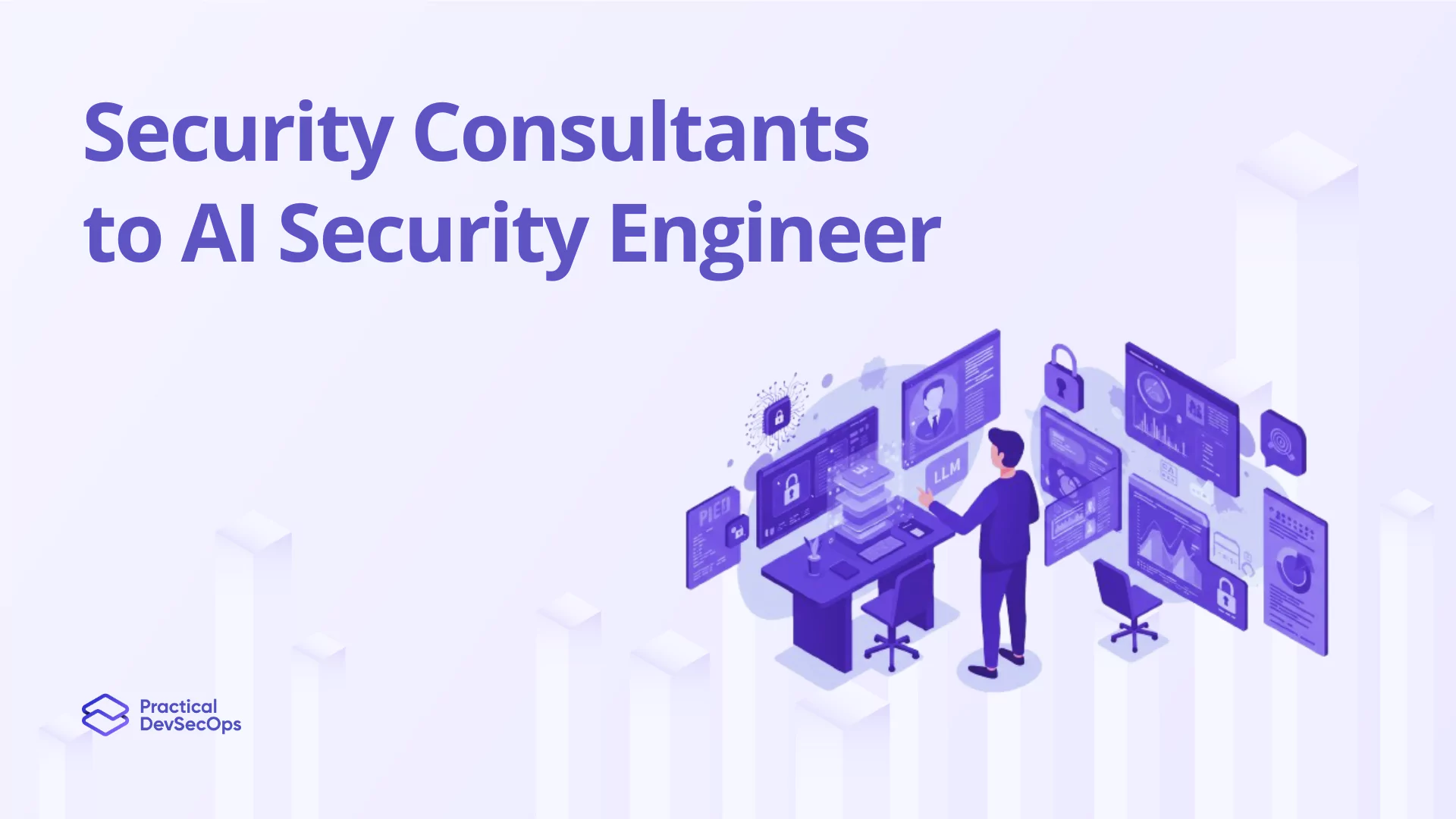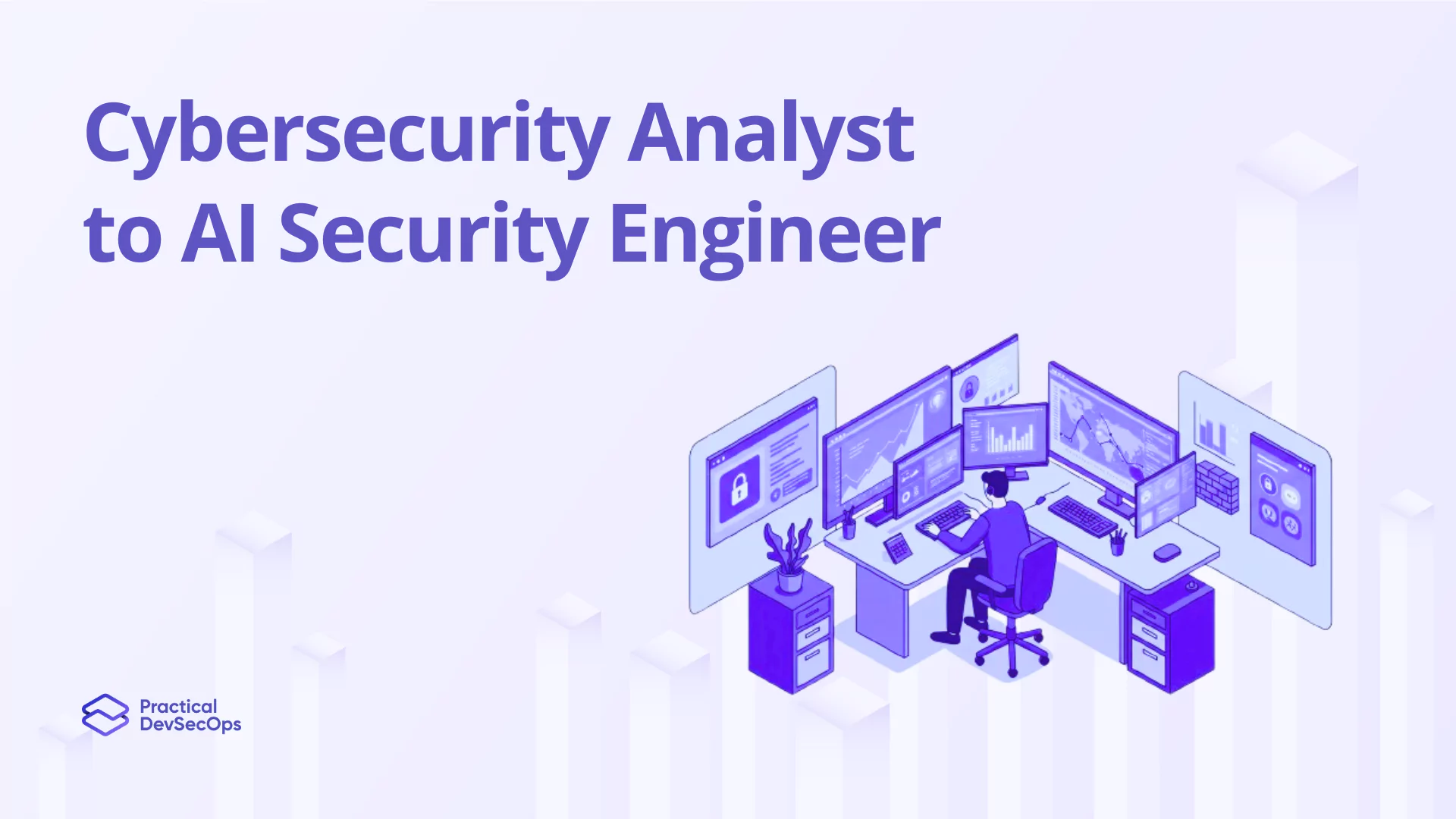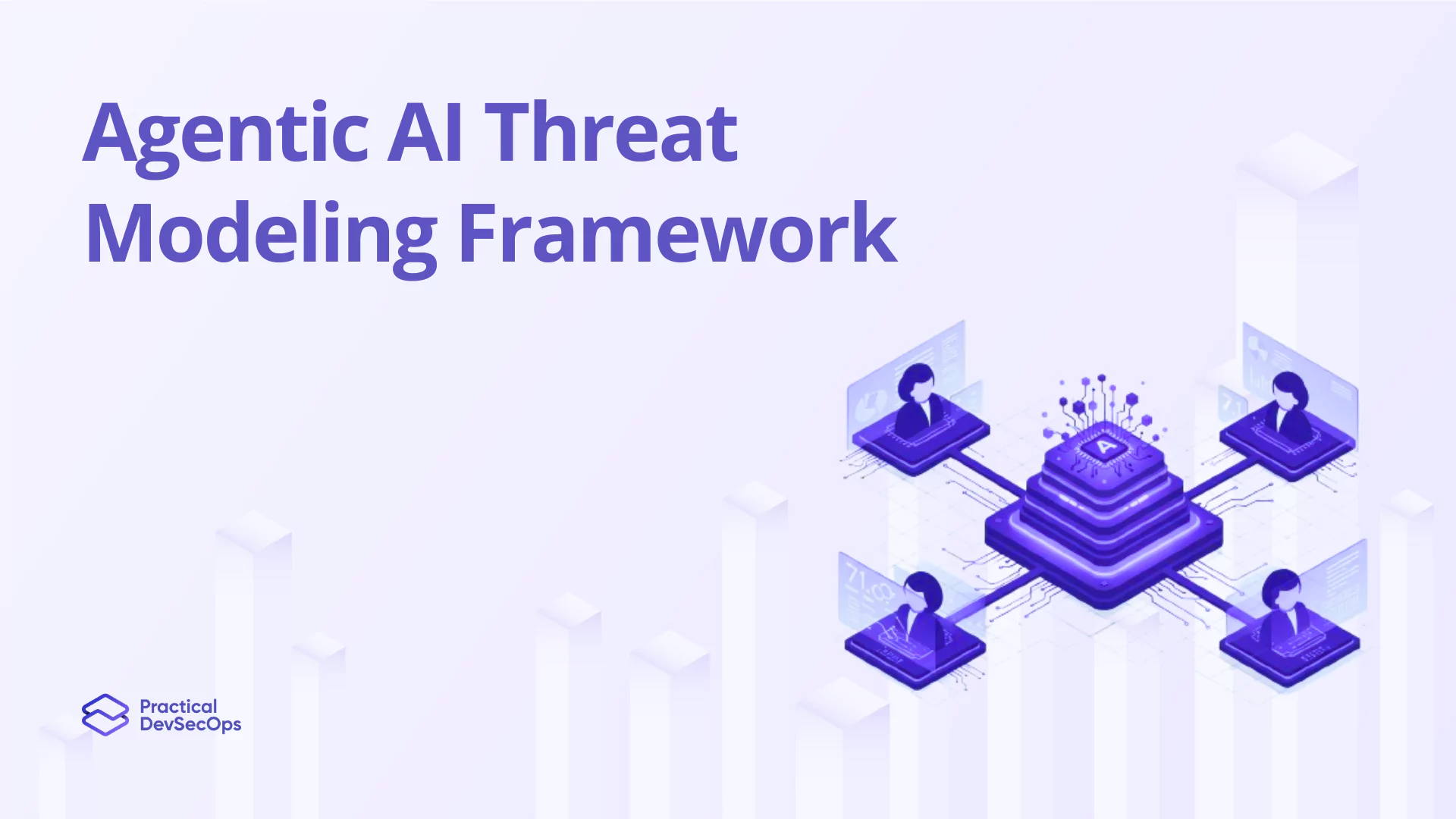Enterprises face growing AI security challenges requiring robust frameworks. Leading solutions include NIST’s AI Risk Management Framework, Microsoft’s AI Security Framework, MITRE ATLAS for adversarial threats, and Databricks’ comprehensive
TL;DR
Enterprises face growing AI security challenges requiring robust frameworks. Leading solutions include NIST’s AI Risk Management Framework, Microsoft’s AI Security Framework, MITRE ATLAS for adversarial threats, and Databricks’ comprehensive AI Security Framework.
These guide organizations in governance, risk management, and threat mitigation across AI lifecycles, with practical applications in sectors like banking. Implementing these frameworks ensures transparency, fairness, and regulatory compliance while safeguarding AI systems from evolving risks.
Ready to master AI security? Enroll in the Certified AI Security Professional(CAISP) course today and secure your expertise in protecting tomorrow’s AI-driven world!
AI security frameworks give multinational corporations uniform guidelines for safeguarding their AI systems in various nations with varying legal requirements. With the help of these enterprise AI security frameworks, businesses operating in Asia-Pacific, Europe, or North America can put uniform security measures in place.
When a company leans on proven blueprints such as the NIST AI Risk Management Framework or the ISO/IEC standards, the journey toward safe and compliant AI systems becomes much clearer.
Global firms avoid reinventing the wheel in every jurisdiction because a single framework covers many regional rules. That economies-of-scale effect spares them the headache of patching together makeshift controls and lets security teams focus on tightening defenses instead of drafting new policy documents.
Three Benefits of AI Security Frameworks for Global Organizations that benefit from AI security frameworks in several ways: AI security frameworks help corporations to be compliant with various regulations while also reducing implementation costs through standardization of processes.
This allows them to continue to be agile and innovate and at the same phase keeping these AI systems secure. Instead of starting from scratch for each new market, companies can use them as pre-fab solutions for full-stack AI risk management.
Understanding AI Security Frameworks
The AI security frameworks can be compared to the instruction manuals that provide AI system security. It provides rules, steps, and tools to protect the AI from harm. Security frameworks will allow us to help locate where risks are located, implement safeguards, and verify the transparency of AI systems.
Think of an AI security framework as a home security plan. You lock the doors, add alarms, and vet people as they come into your dwelling. All AI systems also require similar shielding.
AI security frameworks are important because:
- They help find weak spots before bad guys do
- They give everyone the same rules to follow
- They help meet laws and rules about AI
- They build trust with people who use AI systems
NIST AI Risk Management Framework
The National Institute of Standards and Technology (NIST) created a framework to help manage AI risks. It’s like a safety checklist for AI.
Key Parts of NIST Framework
- Map: Find and list all the places risks might happen.
- Measure: Figure out how big each risk is.
- Manage: Take steps to lower the risks.
- Govern: Set up teams and rules to keep watching for risks.
How to Use NIST Framework?
To use the NIST framework:
- Make a team with people who know different things about AI.
- List all your AI systems and what they do.
- Find the risks for each system.
- Create safety plans for each risk.
- Test your systems regularly.
- Keep learning and improve your safety plans.
Microsoft’s AI Security Framework
Microsoft’s AI Security Framework has its own way of keeping AI safe. Their framework focuses on making sure AI is used the right way and stays protected.
Main Parts of Microsoft’s Framework
- Security: Protect AI systems from attacks.
- Privacy: Keep personal data safe.
- Fairness: Make sure AI treats everyone equally.
- Transparency: Let people know how the AI works.
- Accountability: Make sure someone is responsible for the AI.
How to Use Microsoft’s Framework?
Microsoft’s framework works well when you:
- Use their security tools like Azure AI services.
- Follow their step-by-step guides.
- Use their testing tools to check for problems.
- Train your team using their learning materials.
- Join their security community to share ideas.
MITRE ATLAS Framework for AI Security
MITRE ATLAS (Adversarial Threat Landscape for Artificial-Intelligence Systems) looks at how attackers might try to trick or break AI systems.
What ATLAS Covers?
- Attack Types: Different ways hackers might attack AI.
- Tactics: The steps attackers use.
- Case Studies: Real examples of AI attacks.
- Defense Ideas: Ways to stop the attacks.
Common AI Attack Types in ATLAS
- Data Poisoning: Putting bad information in AI training data.
- Evasion Attacks: Tricking AI into making mistakes.
- Model Stealing: Copying someone’s AI model.
- Privacy Attacks: Getting private data out of AI systems.
Using ATLAS to Defend AI
- Study the attack examples to understand dangers.
- Test your AI against the attack types listed.
- Use their defense suggestions.
- Join threat-sharing groups.
Databricks AI Security Framework (DASF)
The Databrick AI Security Framework (DASF) 2.0 allows organizations to secure their AI systems with 62 identified risks and 64 real use-case controls in the framework itself. DASF is based on standards like NIST and MITRE, and is applicable to many types of AI models.
Databricks DASF also includes tools, courses, and guidance related to the security of AI in the organization. DASF includes a plethora of educational resources and is supported by an AI assistant.
Main Parts of DASF
- Data Protection: Keeping information safe.
- Model Security: Protecting AI models.
- Access Control: Controlling who can use AI systems.
- Monitoring: Watching for strange behavior.
Best Uses for DASF
DASF works best when:
You use the Databricks platform:
- You have many AI models to protect.
- You work with sensitive data.
- You need to follow strict rules.
How to Apply AI Security Frameworks in Real-World Scenarios?
Case Study 1: Hospital AI Implementation Framework
Health facilities all over the world are beginning to utilize artificial intelligence (AI) with the possibility of improving patient healthcare and helping physicians and nurses to better care for patients. But using AI in health facilities isn’t as easy as installing an app on your phone. Health facilities have unique safety requirements and practices to keep patients safe and protect their information.
Why Hospital AI Needs Special Care?
When AI systems break down or get hacked in a hospital, it’s not just an inconvenience – it can be a matter of life and death. Unlike other businesses, hospitals deal with:
- Patient safety concerns – AI mistakes could lead to wrong treatments.
- Private health information – Patient data must stay completely secure.
- Emergency situations – Systems must work even during crises.
- Strict government rules – Hospitals must follow many laws about patient care and data protection.
The Four-Step Safety Framework
Hospitals use a special four-step process to make sure their AI systems are safe and secure:
1. Govern – Building the Right Team
Hospitals need to create a special team that includes:
- Doctors and nurses who understand patient care.
- IT security experts who know about computer safety.
- Legal experts who understand healthcare laws.
- Patient advocates who speak for patients’ needs.
This team makes sure everyone understands how important it is to keep AI systems safe.
2. Map – Understanding All the Risks
The hospital team must look at every place where AI might be used and ask the necessary questions:
- Where could things go wrong?
- How would problems affect patient care?
- What laws and rules must we follow?
- How does AI fit into our daily hospital routines?
3. Measure – Checking How Well Things Work
Hospitals need to constantly check their AI systems by measuring:
- How accurate the AI diagnoses are?
- How often the AI makes mistakes?
- Whether patient information stays private.
- If the systems work fast enough for emergencies.
4. Manage – Fixing Problems and Staying Safe
When hospitals find problems, they must:
- Fix the most dangerous issues first
- Train staff on how to use AI safely
- Create backup plans for when things go wrong
- Keep watching for new problems
Case Study 2: Banking AI Implementation Framework
Banks have begun using artificial intelligence (AI) to make better investment decisions, detect fraud, and improve customer service, but banks must proceed cautiously when introducing AI into their business; banks deal with people’s money and financial information; therefore they must ensure AI is used safely and reasonably.
Why Banking AI Need Special Rules?
Banks have unique challenges when using AI that other businesses don’t face:
- Money decisions impact people’s lives – Wrong loan decisions can hurt families and businesses.
- Strict government rules – Banks must follow many laws about fair lending and customer protection.
- Fighting fraud – AI must catch criminals without blocking honest customers.
- Protecting financial data – Bank information is a top target for hackers.
- Preventing unfair treatment – AI must not discriminate against certain groups of people.
Special Banking AI Challenges
Banks face some tough problems when trying to use AI:
Data Problems:
- Not enough information about people who don’t have bank accounts.
- Old computer systems that need updating.
- Poor quality data that makes AI less accurate.
Fairness Issues:
- Making sure AI doesn’t unfairly reject loans based on race, gender, or other protected characteristics.
- Ensuring AI helps more people get access to banking services.
- Balancing security with customer convenience.
The Four-Step Safety Framework for Banks
Banks use the same four-step process as hospitals, but with a banking-specific focus:
1. Govern – Building the Right Banking Team
Banks need a diverse team that includes:
- Risk management experts.
- Legal compliance specialists.
- Data scientists who understand AI.
- Customer service representatives.
- Community advocates who represent underserved populations.
2. Map – Understanding Banking-Specific Risks
Banks must identify risks in four key areas:
| Risk Type | What It Means | Examples |
| Credit Risk | Risk of customers not paying back loans | AI approving bad loans, rejecting good customers |
| Operational Risk | Risk of systems failing | AI crashes during busy times, data gets corrupted |
| Compliance Risk | Risk of breaking laws | AI discriminates unfairly, violates privacy rules |
| Reputation Risk | Risk of damaging bank’s image | Customers lose trust, negative media coverage |
3. Measure – Checking Banking AI Performance
Banks must constantly monitor:
- How accurate AI loan decisions are?
- Whether AI treats all customers fairly.
- How well AI catches fraud without blocking real transactions?
- Monitor customer satisfaction with AI-powered services.
- Speed and reliability of AI systems.
4. Manage – Fixing Problems and Staying Compliant
When banks find issues, they must:
- Fix the most serious problems first (especially those affecting customer safety).
- Train staff on new AI tools and procedures.
- Create backup systems for when AI fails.
- Update AI systems to eliminate bias and improve accuracy.
Making Banking AI Fair and Transparent
Banks have special responsibilities to ensure their AI is fair:
Preventing Bias:
- Regular testing to make sure AI doesn’t discriminate
- Using diverse data that represents all communities
- Having humans review AI decisions for fairness
Explaining Decisions:
- Customers can ask why they were approved or denied for loans
- Banks must be able to show regulators how AI makes decisions
- Clear communication about when and how AI is used
Protecting Customer Rights:
- Easy ways for customers to complain about AI decisions
- Quick processes to revise AI mistakes
- Regular updates about how AI is being used
Real-World Banking AI Examples
Here’s how safe AI implementation looks in everyday banking:
For Loan Applications:
- AI quickly reviews applications, but humans make final decisions on complex cases.
- Customers get clear explanations of why they were approved or denied.
- Regular testing ensures AI doesn’t unfairly reject certain groups.
For Fraud Detection:
- AI spots suspicious transactions in real-time.
- Customers get immediate alerts about potential fraud.
- System learns from mistakes to reduce false alarms.
For Customer Service:
- AI chatbots handle simple questions 24/7.
- Complex issues are transferred to human agents.
- All interactions are recorded for quality and compliance.
Who’s Responsible for Banking AI Safety?
Bank Employees:
- Loan officers using AI tools.
- IT and cybersecurity teams.
- Compliance and risk management staff.
- Customer service representatives.
External Partners:
- Government regulators (Federal Reserve, FDIC, Consumer Financial Protection Bureau).
- Third-party AI vendors.
- Community organizations representing underserved populations.
- Independent auditors and testing firms.
AI Framework Implementation Roadmap
Follow these steps to use security frameworks in your organization:
Step 1: Choose the Right Framework
Pick the framework that matches your needs. You might even use parts from different frameworks.
Step 2: Make a Team
Get people from security, AI development, legal, and management to work together.
Step 3: Check Current Systems
Look at your AI systems to see what risks they have now.
Step 4: Create a Plan
Make a step-by-step plan to add security measures.
Step 5: Train Everyone
Make sure everyone knows how to follow the new security rules.
Step 6: Test and Improve
Regularly check if your security is working and make it better.
Use Cases for Large Organizations
Large organizations use these AI security frameworks to manage risks across the AI lifecycle, ensure compliance with regulations, protect sensitive data, and foster trust in AI systems. They enable secure, ethical, and scalable AI deployments in sectors like finance, healthcare, and critical infrastructure, where robust risk management and governance are required.
Top 4 AI Security Frameworks Comparisons
| Framework | Pros | Cons |
| NIST AI Risk Management Framework | Comprehensive, lifecycle-wide risk management | It can be complex and resource-intensive to implement for smaller teams |
| Emphasizes governance, transparency, fairness, and accountability | Voluntary, so adoption and enforcement may vary | |
| Widely recognized and cross-sector applicable | ||
| Microsoft’s AI Security Framework | Integrates with Microsoft’s security tools and cloud ecosystem | Tied closely to Microsoft products; less flexible for non-Microsoft environments |
| Focus on operationalizing AI security best practices | Public documentation and community adoption, less extensive than NIST or MITRE | |
| MITRE ATLAS Framework | Focused on cataloging real-world AI threats and attack techniques | More focused on adversarial threats, less on governance and organizational processes |
| Useful for threat modeling and red teaming | May require integration with other frameworks for holistic risk management | |
| Backed by MITRE’s expertise in threat intelligence | ||
| Databricks AI Security Framework | Actionable, platform-agnostic controls for AI security | Newer, so less mature and not as widely adopted as NIST or MITRE frameworks |
| Maps risks to multiple industry standards and frameworks | May require customization for non-Databricks environments | |
| Bridges business, data, and security teams with practical tools |
Note:
Each framework offers unique strengths for large organizations, depending on their technology stack, risk profile, and regulatory needs.
Conclusion
AI security frameworks provide us with resources to help protect those AI systems from various threats. When you design and implement systems using them, you’ll be able to make AI safer, be more compliant, and create trust. Start small, learn by doing, and iterate. If you want to have good hands-on practice with well-known frameworks, including the NIST AI RM.
If you are looking to upskill in AI Security, then check out our newly launched Certified AI Security Professional (CASP) course to obtain real practical hands-on skills within our browser-based lab environment and start using these top 4 AI Security Frameworks. Remember that you will be on an AI security journey, not just a one-off project.
Skills you will learn from the Certified AI Security Professional Course:
- The AI security frameworks like MITRE ATLAS and OWASP Top 10 through practical exercises.
- Set up essential security tools: model signing, vulnerability scanning, and dependency checks.
- Use proven methods to find and fix security gaps in AI systems.
- Protect your development pipelines and automated systems from AI attacks.
- Stop common threats like data poisoning and model theft in real AI applications.
- Understand the best security frameworks and standards used in the industry.
- Stay compliant with important regulations like ISO/IEC 42001 and EU AI Act.
FAQ’s
Which AI Security framework is best for beginners?
The NIST framework is usually the easiest to start with because it gives clear steps and has numerous free resources.
Can I use more than one framework?
Yes! Many organizations use parts from different frameworks to build the best protection.
How often should we update our AI security?
You should check your security at least every six months, or whenever your AI systems change.
What’s the biggest mistake people make with these AI Security frameworks?
The biggest mistake is trying to do everything at once. It’s better to start small and build up your security over time.
Do small companies need these frameworks too?
Yes.even small companies using AI need security. You can start with just the basic parts of these frameworks.
How does Google’s Secure AI Framework (SAIF) ensure AI model security and privacy?
Google’s SAIF ensures AI model security and privacy with strong access controls, data protection, threat monitoring, secure development, and privacy-by-design principles throughout the AI lifecycle.
What are the key components of NIST’s AI Risk Management Framework for trustworthy AI?
NIST creates four AI security functions:
- Govern – Establishes leadership
- Map – Identifies risks
- Measure – Assesses systems
- Manage – Resolve problems continuously
How can I implement multi-layered defenses based on expert tips for AI security?
Use multiple layers of protection to keep AI systems secure: secure the infrastructure; encrypt data; comply to a zero-trust policy; monitor for threats; conduct periodic audits; and educate your employees about risks associated with artificial intelligence.
What role does the OWASP AI Security and Privacy Guide play in developing secure AI systems?
OWASP delivers practical AI security guidance covering design, development, testing, and procurement of secure AI systems:
- Addresses AI-specific threats – Data protection, transparency, and fairness
- Provides actionable controls – Widely referenced best practices
- Covers full lifecycle – From planning to deployment
- Ensures compliance – Helps meet evolving AI standards
- Mitigates unique risks – Tackles AI-specific vulnerabilities
How do industry alliances like CoSAI support secure AI deployment across organizations?
Industry alliances like CoSAI connect leading organizations to promote secure AI deployment by documenting best practices, developing open standards, and providing technical tools to support AI security. They are typically developing guidance, frameworks and open-source solutions that would help organizations identify and mitigate risks particular to AI, including model theft, and data poisoning, working to ensure AI systems are secure-by-design, and resilient to emerging threats.
What best practices are recommended for protecting generative AI Systems from threats?
- Lock down your data with encryption and enable multifactor authentication. Seriously, don’t skip this.
- Give people only the access they need – Keep tabs on what they’re up to with activity logs.
- Update your stuff. Don’t be that person running Windows XP. Patch those holes before someone crawls through.
- Scrub every bit of data coming in. Hackers love sloppy input.
- Keep tabs on your sensitive info – know where it is, who’s touching it, and encrypt it like your life depends on it.
- Actually have rules and a game plan for when things go sideways. Governance policies, incident response.
- Don’t just set it and forget it – watch for weird stuff 24/7. Intrusion and anomaly detectors are your friends.
- Don’t get comfy. Tech and attack tricks change faster than trends. Keep learning, stay sharp.
How do different frameworks like SAIF, NIST and CSA complement each other in AI security?
Frameworks like SAIF, NIST, and CSA complement each other by covering different layers of AI security. SAIF offers a broad, strategic approach to AI-specific risks and governance. NIST provides a high-level, flexible roadmap for risk management and incident response. CSA delivers detailed, technical controls for cloud and AI environments. Together, they help organizations build both strong foundations and targeted defenses for secure AI deployment.
What is the NIST Framework for AI Security?
The NIST AI Risk Management Framework helps organizations manage AI risks throughout development, deployment, and decommissioning. It builds trustworthy AI by focusing on reliability, security, transparency, fairness, and accountability. The framework uses four core functions like Govern, Map, Measure, and Manage to guide organizations in identifying, assessing, and reducing AI-specific risks.
What is the OECD framework for the classification of AI systems?
The OECD Framework classifies AI systems using five dimensions: People & Planet, Economic Context, Data & Input, AI Model, and Task & Output. This framework helps policymakers assess AI characteristics, impacts, and risks. It supports responsible innovation and risk management while aligning with OECD AI Principles for trustworthy AI.
How big is the AI security Market?
The AI security market will reach $25.2 to $32.9 billion in 2025. The sector grows rapidly at 20-25% annually. Rising cyber threats, cloud adoption, and demand for automated AI-powered security solutions drive this growth.
What is the ISO for AI security?
ISO/IEC 42001 sets requirements for AI management systems focused on governance, risk management, and security controls. It aligns with standards like ISO 27001 and supports regulatory compliance. Organizations use this standard to identify, assess, and mitigate AI-related risks throughout the AI lifecycle.
What is an AI security system?
AI security systems use machine learning, neural networks, and computer vision to detect, analyze, and respond to security threats in real time. They identify patterns and anomalies humans miss, automate threat detection and response, and protect data, algorithms, and infrastructure from unauthorized access and attacks.
What is NIST AI RMF?
The NIST AI Risk Management Framework helps organizations identify, assess, and manage AI risks from development to decommissioning. It uses four core functions: Govern, Map, Measure, and Manage. The framework promotes trustworthy, secure, and responsible AI by addressing risks like bias, privacy, and security vulnerabilities.




